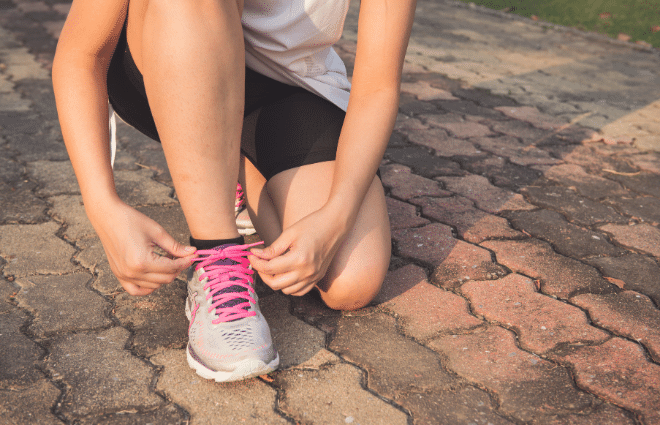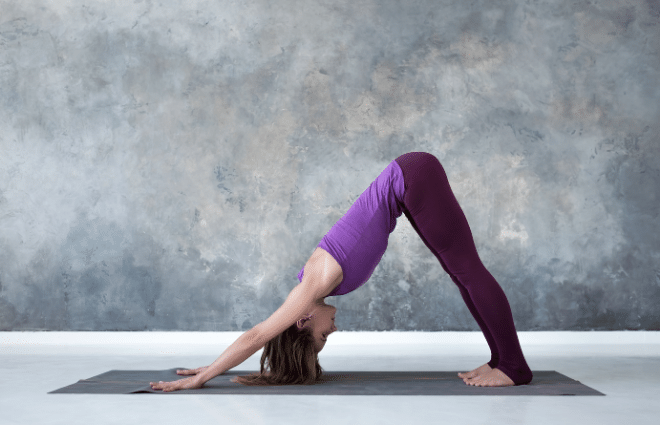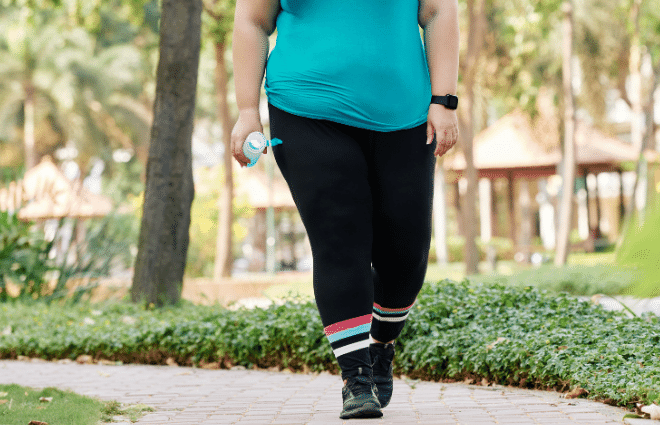How Exercise Can Reverse Insulin Resistance
Insulin resistance is an issue of epidemic proportions today, with 1 in 3 Americans being pre-diabetic, and even more being insulin resistant.
The good news is that insulin resistance is reversible, even if you have already developed type II diabetes.
However, most people get overwhelmed by all the lifestyle changes necessary to reverse insulin resistance—especially if you’ve never successfully dieted or worked out on a regular basis.
If you discovered your insulin resistance through your doctor, they probably recommended cutting back on sugars and carbs, and increasing your exercise—which sounds simple enough, but trying to figure out exactly what to focus on can quickly feel overwhelming and stressful.
Insulin resistance is scary and has a major impact on your health and everyday life, so it is not something you want to take your time fixing.
We get a lot of questions from our readers wondering what the fastest way is to reverse insulin resistance, and whether you should focus on your diet, exercise, or both—especially at the beginning.
And I get that healthy lifestyle changes can feel overwhelming and difficult, especially since some of the hallmark symptoms of insulin resistance are fatigue, brain fog, and strong food cravings.
Factor in the encyclopedia of information from your doctor, friends and family, and WebMD, and it’s easy to enter information overload.
So if you’re feeling frozen in place, or too overwhelmed to figure out where to start, you’re not alone—and you’re in the right place.
We’ve talked a lot about the way diet impacts insulin sensitivity, but we haven’t talked nearly as much about exercise.
Exercise is crucial to overall well being, and it’s something that many people overlook when they first try to address their insulin resistance.
But burning glucose and improving your cardiovascular health is very important in the battle against insulin resistance—possibly even more important than your diet.
We’ll share exactly what happens in your body when you exercise, how that affects your insulin sensitivity, and whether or not you need both exercise and diet to reverse your insulin resistance.
First, let’s go over why exercise and movement are so important to your health, including your insulin sensitivity—and what happens if you don’t do enough of it.
This post may contain affiliate links, which helps keep this content free. Please read our disclosure for more info.
How Exercise Affects Insulin Levels

We all know exercise is important for your health, and definitely necessary if you want to look good in your swimsuit.
But when it comes to insulin resistance, many people automatically think of diet—cutting out sugary foods and carbs, and adding in fiber and protein.
However, exercise is just as important to consider when addressing insulin resistance, since the entire purpose of glucose and insulin is to get glucose from food into your muscles so you can burn it as energy.
So let’s take a look at what happens when you don’t exercise or move enough, and how simply getting enough exercise can impact your insulin resistance.
What Happens When You Don’t Move Enough

Most of us know that not moving enough will most definitely lead to weight gain; and if you’ve ever spent too long at a desk or on the sofa, you know that sitting too long can leave you feeling stiff, sore and achy.
But a lot more is happening inside your body when you skip out on exercise, especially if you’re chronically sedentary—and none of it is good.
Even just one week of bedrest has been shown to send otherwise healthy, insulin sensitive people temporarily into insulin resistance. (1)
So it makes sense that if you regularly sit for long periods of time, or just don’t move enough during the day, you could easily become insulin resistant.
The main reason for this is because you aren’t burning much of the glucose that goes into your bloodstream when you eat, and you’re also not using up the glucose stored in your muscles—so your body’s glucose stocks are full.
Since your muscles and tissues can’t or won’t hold more glucose, your body starts rejecting more “inventory” as it comes in.
Insulin is the hormone that transports glucose, so your muscles start rejecting insulin, leaving the glucose and insulin circulating in your bloodstream.
However, your body is also wired to clear the glucose out of your blood, so it sends more and more insulin, and effectively overwhelms your muscles until they let at least some of the insulin and glucose molecules in.
The less you move (and the more you eat), the more glucose builds up in your bloodstream, until your pancreas simply can’t produce enough insulin to clear out the buildup of glucose—and you end up with type II diabetes.
The other side of the equation is your body composition—meaning the ratio of fat to muscle mass.
If you don’t exercise, you won’t have a lot of muscle mass, and you’ll likely have excess fat—which, while not a guarantee of developing insulin resistance, is a risk factor, and makes it harder to reverse insulin resistance.
Along with the problem of insulin resistance, there are a whole host of other health issues that happen when you lead a sedentary lifestyle, whether or not you are overweight or insulin resistant, including:
- Loss of muscle mass, or atrophy of muscles
- Reduced bone density, and osteoporosis
- Lower absorption of most minerals or vitamins
- Increased risk of cardiovascular disease
- Weakening of lungs and heart
- Hardening of arteries, buildup of plaque, and higher risk of blood clots
- Tight muscles and tendons, bad posture, and aches and pains
- Increased risk of injury
- Poor digestion
- And more
Once you develop insulin resistance, you increase your risk of many of these major health issues and more, including high likelihood of cardiovascular disease, high risk of blood clots, nerve damage, eye damage, and more. (2)
What Happens In Your Body When You Exercise

While being sedentary causes a lot of problems and can lead directly to insulin resistance, the good news is that fixing these issues may be as simple as moving your body more.
When you exercise, your body converts its glucose stores into energy, effectively opening up storage space for more glucose from your bloodstream, and instantly reducing your insulin resistance.
This effect on insulin sensitivity lasts anywhere from 24-72 hours, which means that regular exercise (ideally daily) can almost instantly improve or even reverse your insulin resistance.
Exercise also reduces your risk for developing certain health issues related to insulin resistance, including cardiovascular disease and blood clots, as well as improving other health factors, like:
- Increased lung capacity
- Improved artery conditioning and blood pressure
- Better resting heart rate
- Improved digestive health
- Smooth muscles (organs) relax, leading to better function
- Fat loss and muscle building
- And more
What Kind of Exercise is Best for Reversing Insulin Resistance
No matter what kind of exercise you do, it will improve your overall health.
But if you want to reduce your insulin resistance quickly, there are certain workouts that have been shown to have an improved impact on insulin sensitivity.
Yoga

Believe it or not, you don’t need to spend an hour on the treadmill (a.k.a. the dreadmill) to quickly improve your insulin resistance.
Yoga is a fantastic workout choice for reversing insulin resistance—especially if you’re new to exercising.
The movements are slow and controlled, which not only reduces the risk of injury, it also helps build strength and muscle tone.
New research has also shown that the stretches and movements in many yoga positions massage and stimulate the pancreas, which improves the organ’s health, and stimulates insulin secretion. (3)
If your insulin resistance has progressed to the point that your body doesn’t produce enough insulin, this benefit of yoga can be a great way to improve your blood glucose levels.
Yoga also has the added benefit of improving your awareness of your body, which can make it easier to:
- improve your diet,
- become more aware of hunger and fullness cues,
- reduce cravings,
- and simply move more throughout the day.
Many of the people who have gone through our yoga weight loss program, The Yoga Fat Loss Bible, have experienced improvement in their insulin resistance, as well as major fat loss.
While weight loss isn’t definitively linked to improvement in insulin sensitivity, fat loss is—with some studies showing that even surgical removal of fat has an immediate impact on insulin resistance. (4)
HIIT

High intensity interval training, otherwise known as HIIT, is a fantastic way to burn a lot of glucose (and a lot of calories) in a short period of time.
If you’ve never done a HIIT workout before, it’s exactly what it sounds like—intervals of high intensity exercise in between rest periods of lower intensity exercise.
Arguably the best part of HIIT workouts is that the calorie-burning benefit lasts longer than most other exercise routines.
This makes most HIIT routines a very effective way to reduce fat quickly.
Additionally, new research has shown that when you perform a HIIT workout, your fast-twitch muscle fibers do most of the work–which stimulates greater glucose uptake compared to using your slow-twitch muscle fibers.
The researchers in this study note that, “[the] really interesting part is that research has shown that this happens whether insulin is present or not.
“Therefore, this approach will also work with people with Type 1 diabetes.
“In addition, the adrenaline released to maintain the HIIT may help with fat loss – as the muscles use up the glucose from the blood, the body will turn to fat as the primary fuel source.” (5)
If the idea of doing anything labelled “high-intensity” scares you away, don’t write these workouts off just yet!
While many HIIT workouts online are built for more advanced athletes, the main goal is to alternate between periods of faster movements that raise your heart rate, and periods of slower movements that give you a chance to recover before the next quick burst.
There are HIIT workouts, such as the four-minute Nitric Oxide Dump, that are perfect for beginners, and will help you break a sweat and gain amazing health benefits without wearing you out.
Walking

Exercise doesn’t have to be difficult, or involve special equipment or learning new skills.
Walking is a fantastic way to get in shape and improve your insulin resistance without stressing out.
Aim for 30 minutes a day, as many days as you’re able.
A moderate pace is ideal, but the main goal is just to get your body moving—especially if you haven’t been exercising at all.
Even better: Try taking your daily walk outside, instead of on the treadmill.
You’ll get the added benefit of sunlight and fresh air, which help:
- boost your vitamin D levels,
- improve your sleep,
- and ward off seasonal depression. (4)
Plus, walking around your neighborhood instead of going to the gym means you’re not driving–so you can save some gas and reduce your carbon footprint! Win-win-win!
Bottom Line

While the exercises above are most effective for reversing insulin resistance, this is by no means an exhaustive list—and the main goal is just to get your body moving on a regular basis, so you start burning more glucose and getting your metabolism moving!
Starting new habits can be difficult, though, so here are our best tips to help increase your activity level:
- Invest in a wearable fitness tracker or smart watch
- Find a workout buddy or accountability partner
- Sign up for a challenge or exercise program, such as:
- a daily exercise challenge on social media
- a workout class (in-person or virtual)
- a program like the Yoga Fat Loss Bible, or 21-Day Fat Loss Challenge
- Get more movement in during normal activities by:
- Taking the stairs instead of the elevator
- Parking at the back of the parking lot
- Walking your dog instead of just letting them into the yard
- Playing outside with your kids, instead of just supervising
Can You Just Exercise Without Dieting?
Technically, yes, you can get some benefits to your insulin sensitivity just by increasing your exercise without changing your diet.
That’s why people like Michael Phelps can eat their weight in carbs at every meal, and not go into a diabetic coma.
However, if you’re not willing to work out like an olympian, you’re probably going to have to make at least some dietary changes to make real progress towards reversing your insulin resistance.
What About Just Dieting Without Exercise?
While exercise is very important for reducing insulin resistance, we know many of our readers just aren’t in a place where they feel comfortable with exercise yet—and that’s ok.
Our 21-Day Fat Loss Challenge is built for people just like you—who need to reverse their insulin resistance and lose weight FAST, but just aren’t ready or able to take on a workout program.
In fact, we actually recommend you DON’T work out during our Challenge the first time you do it, especially if you weigh over 200 lbs. (although a short, daily walk is a good option if you do want to get some movement in).
The truth is, you have the power to reverse your insulin resistance—but it’s going to take some serious dietary changes to make it happen.
And if you’re hesitant to start a weight loss program because you feel like you’ve tried just about everything, and nothing has worked (or worked for long), then this is absolutely for you.
Many of our clients felt exactly the same way before starting our program—hopeless, exhausted, frustrated, and just over weight loss programs that don’t work for them.
We created our 21-Day Fat Loss Challenge for people exactly like you—people who feel like they’ve tried everything under the sun, but just can’t shed the weight or keep it off.

Our challenge provides a step-by-step plan to help you lose up to 21 lbs in just 21 days, with far less effort than you may think!
Tons of our clients have turned it into a lifestyle diet and have lost as much as over 100 pounds with the challenge!
And if you are ready to get your workout on and kick your weight loss into high gear, we have you covered there, too!
Our 21-Day Fat Loss Challenge has a detailed, step-by-step, day-by-day workout program perfect for beginners.
The best part? Besides just losing weight, the 21-Day Fat Loss Challenge was designed to heal your gut, rebalance your hormones, and retrain your tastebuds—so you’ll actually be able to keep the weight off!
The Challenge is perfect for people with insulin resistance, and many of our clients have actually reversed their insulin resistance with the Challenge.
If you’re ready to make some changes in your life, this is the ONLY place you should start. We’ll teach you exactly how to make the necessary changes in your diet and lifestyle, and how to keep them “beyond the diet.”
Take control of your life and start your 21 Day Fat Loss Challenge TODAY!
Leave a comment below if you enjoyed this article on exercise and insulin resistance, or if you have any questions!

Very informative and useful post.
Thanks for sharing with us.